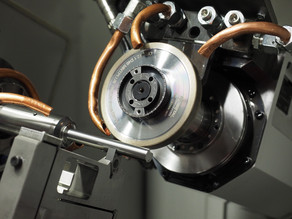Greybox model-based prediction of the wear evolution of coated cemented carbide tools by experimental and model-driven identification of relevant load horizons (SPP2402)
Coated cemented carbide tools (CCCT) used extensively inmachining exhibit a complex, transient wear behavior. At the current state of the art, the analysis and modelling of this wear behavior is carried out through the isolated use of deterministic (white box) and data-driven models (black box), each of which is validated with the aid of experimental investigations. In this way, however, the behavior of CCCT cannot be modelled with sufficient accuracy over the entire service life due to the instationary wear progress. Against this background, the aim of this project is to realize a prognosis of the wear evolution based on a greybox model through the experimental and model-driven identification of relevant load horizons and thus to achieve a considerable improvement in the prognosis quality of the service behavior of CCCT over their entire service life. In order to achieve this goal, extensive experimental investigations are first carried out on a production lathe. By recording in-situ and ex-situ measurement data, a precise description of the initial condition of the CCCT as well as a detailed monitoring of the wear progress until the end of the service life is achieved. The use of a data-driven anomaly detection for defect detection, which carries out an in-situ monitoring and analysis of the process forces and noise emissions with the help of previously fed training data, serves to identify critical load horizons over the entire service life (blackbox). The use of complex ex-situ measurement techniques then allows correlations between the in-situ measurement data and the current wear condition of the tool to be revealed at the critical load horizons. Numerical chip formation simulations, which are validated by experimental investigations (white box), are used to quantify state variables that cannot be determined experimentally (e.g. relative speed between chip and tool or normal contact stress). Based on the wear condition of the CCCT characterized at the critical load horizons, an adjustment of the wear rate in the numerical simulations is provided, thus implementing the greybox modelling as a whole. This procedure makes it possible to predict the behavior of the CCCT over its entire service life as well as the immanent stochastic failure at the end of its entire service life as well as the immanent stochastic failure at the end of its service life with a precision that has not been achieved so far.





![[Translate to English:] [Translate to English:]](/storages/isf-mb/_processed_/a/1/csm_Wendel_Tiefbohrer_51a08eea1c.jpg)